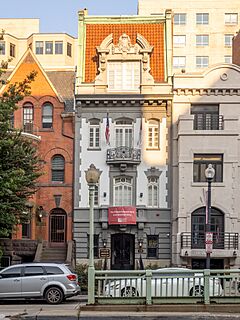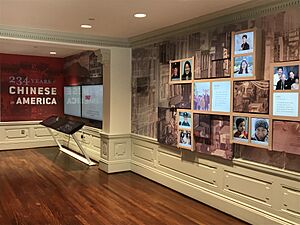Chinese American Museum DC facts for kids
The Chinese American Museum DC (CAMDC) is a special museum located in Downtown Washington, DC. It was created by The Chinese American Museum Foundation, along with help from many generous people and the public. This museum teaches visitors about the history of Chinese people in America. It also focuses on important events like the Chinese Exclusion Act of 1882. The museum shares stories about the challenges and successes of Chinese Americans. It also celebrates their culture and achievements, both from the past and today.
The idea for the museum started in late 2017. A historic, five-story building from 1907 was given to the museum. This building is in the Embassy Row area of D.C., not far from the White House. The museum welcomed visitors during its development. It has recently reopened to the public after being closed due to health restrictions.
What You Can See and Do
In October 2019, the museum finished the first part of its permanent exhibits. These exhibits are in the reception lobby and on the first floor.
Interactive Displays
One exciting feature is a digital photo-wall. It shows personal stories and pictures of everyday Chinese Americans. There is also an interactive digital timeline. This timeline highlights important dates, people, and key moments in Chinese American history.
Special Events and Exhibits
The museum has also hosted special events. These include conferences and temporary exhibits. One exhibit was called "Chinese American Women in History." Another was "Safe Harbor: Shanghai." This exhibit and lecture focused on Jewish refugees. They found safety in World War II Shanghai and later moved to the United States.



